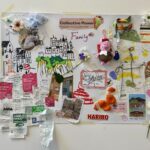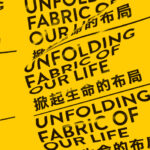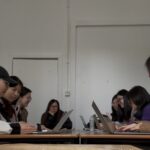In the contemporary art context, traditional Chinese paper-cutting is undergoing a process of “regeneration” and transformation.
The first artist is Chen Fenwan, a contemporary paper-cutting artist of the new generation. She integrates traditional Chinese paper-cutting into the contemporary art context with innovative techniques. Since 2014, she has been continuously exploring the modern transformation of paper-cutting. Her creations retain the symbolic meaning of paper-cutting in folk customs, while developing forms such as spatial installations and interactive videos.
天地广场喷泉-1-1024x683.jpg) (chenfenwan, n.d.)
(chenfenwan, n.d.)
This intricate installation composed of layered hand-cut paper motifs evokes traditional celebratory symbolism while subverting its decorative function. By meticulously repeating forms through manual labor, Chen resists mechanical uniformity and reasserts the tactile intimacy of handcraft. The work embodies the “spirit” of paper cutting—its rhythm, imperfection, and material delicacy—highlighting how manual repetition can rival technological precision. Tenfold Happiness prompts viewers to consider whether true cultural memory can be replicated, or if it must be felt through touch and time.
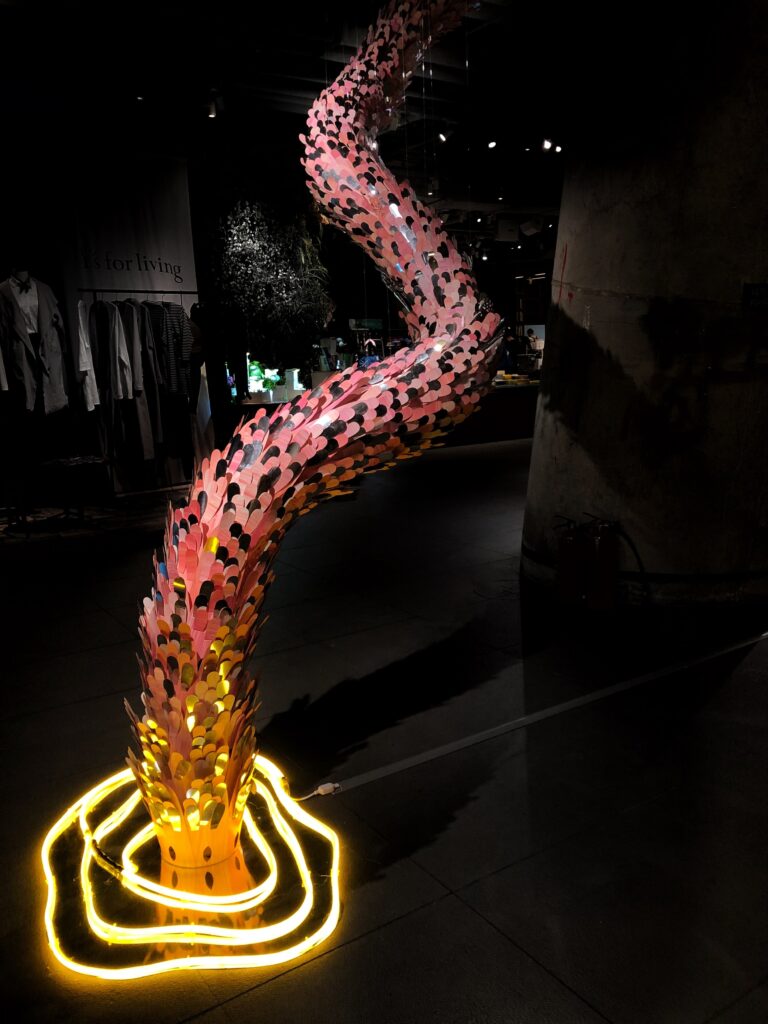
(chenfenwan, n.d.)
Infinite transforms a single motif into an immersive field through hand-cut repetition, mimicking the visual logic of digital cloning yet preserving the sensual fragility of paper. The deliberate labor embedded in each segment contrasts the speed and coldness of mechanical duplication. In doing so, Chen constructs a poetic tension between endlessness and individuality, reflecting the exhibition’s core question: does mechanical reproduction erase artistic soul, or does handcraft still hold the power to assert human presence within systems of repetition?
The second artist is Bovey Lee, a Chinese-American artist. Her works explore the contradiction and symbiosis between traditional and modern technologies. Her piece “Divertical” showcases her signature visual language: on a whole sheet of Chinese paper, the artist delicately carves out intricate patterns with a utility knife.
Her creations are called “three-fold”.
Hal Foster (2002) once analyzed how Pop artists transformed mechanical printed images into handcrafted ones, resulting in a “confusion between hand and machine”. Bovey Lee’s practice was exactly like this: she replicated and combined a vast number of contemporary image elements through computer, but ultimately completed the works by hand-cutting. She combines the precision of modern technology with traditional handwork.
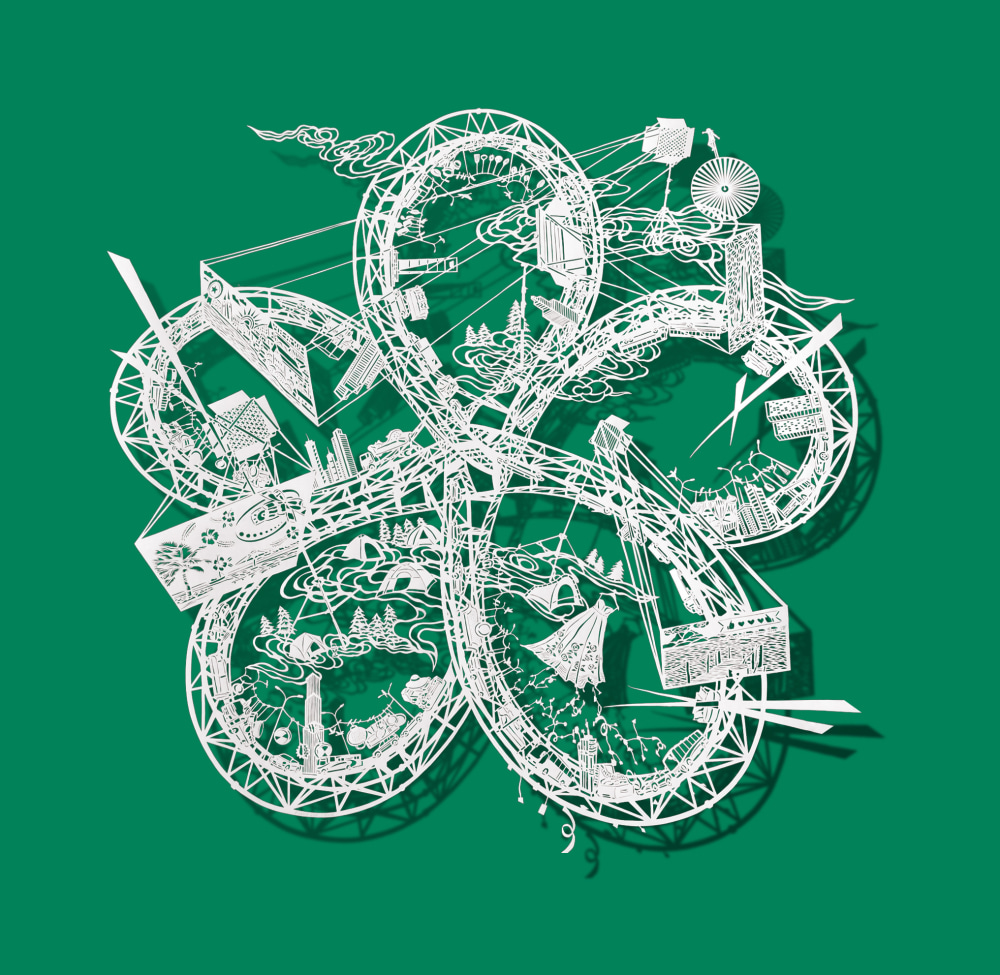

(Bovey Lee, n.d.)
The third artist is Cui Xiaochong, who is a practitioner in the Chinese contemporary art who integrates paper-cutting art into the contemporary context. His works use traditional Chinese paper-cutting as the medium and extend the tradition into contemporary art.
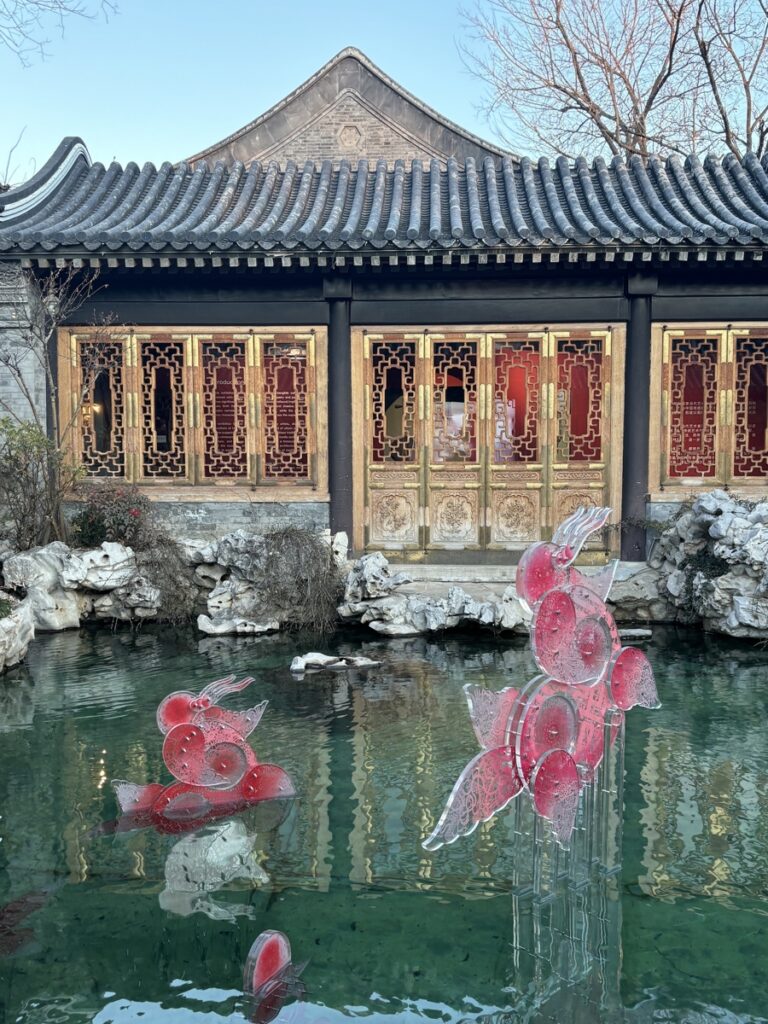
Cui Xiaoqing’s “Leaping”, an exhibit at the “Ordering a Play” Traditional Shadow Puppetry and Contemporary Art Special Exhibition at Nanchizi Art Museum (Photo: Fan Xin)
“Leaping” is a dynamic installation artwork. The pattern of the school of carp in the water is precisely completed by means of laser cutting and other mechanical replication methods. Each carp pattern is replicated multiple times in a standardized way. The artist uses mechanical technology to amplify the effect of hand-cut paper-cutting. The mechanical device distributes the paper-cut patterns in three-dimensional form in the water space, and through the shaking of water flow and wind force, the audience can feel the dynamic vitality of the image.
Nicolas Bourriaud said: “The theoretical horizon of contemporary art has shifted from the private symbolic space to the real context of human interaction. Art is a state of encounter.” The practices of these three artists have precisely brought the ancient paper-cutting into a new “encounter” field. On the one hand, they inherit and expand the cultural connotations of paper-cutting; on the other hand, they create new works that combine interactivity and conceptualism by means of mechanical reproduction and digital technology.
Reference
Gavlakgallery.com. (2016). Bovey Lee ‘Divertical’ – Exhibitions – GAVLAK. [online] Available at: https://www.gavlakgallery.com/exhibitions/bovey-lee-divertical [Accessed 24 Mar. 2025].
Foster, H. (2002). London Review of Books. [online] London Review of Books. Available at: https://www.lrb.co.uk/the-paper/v24/n16/hal-foster/pop-eye [Accessed 24 Mar. 2025].

